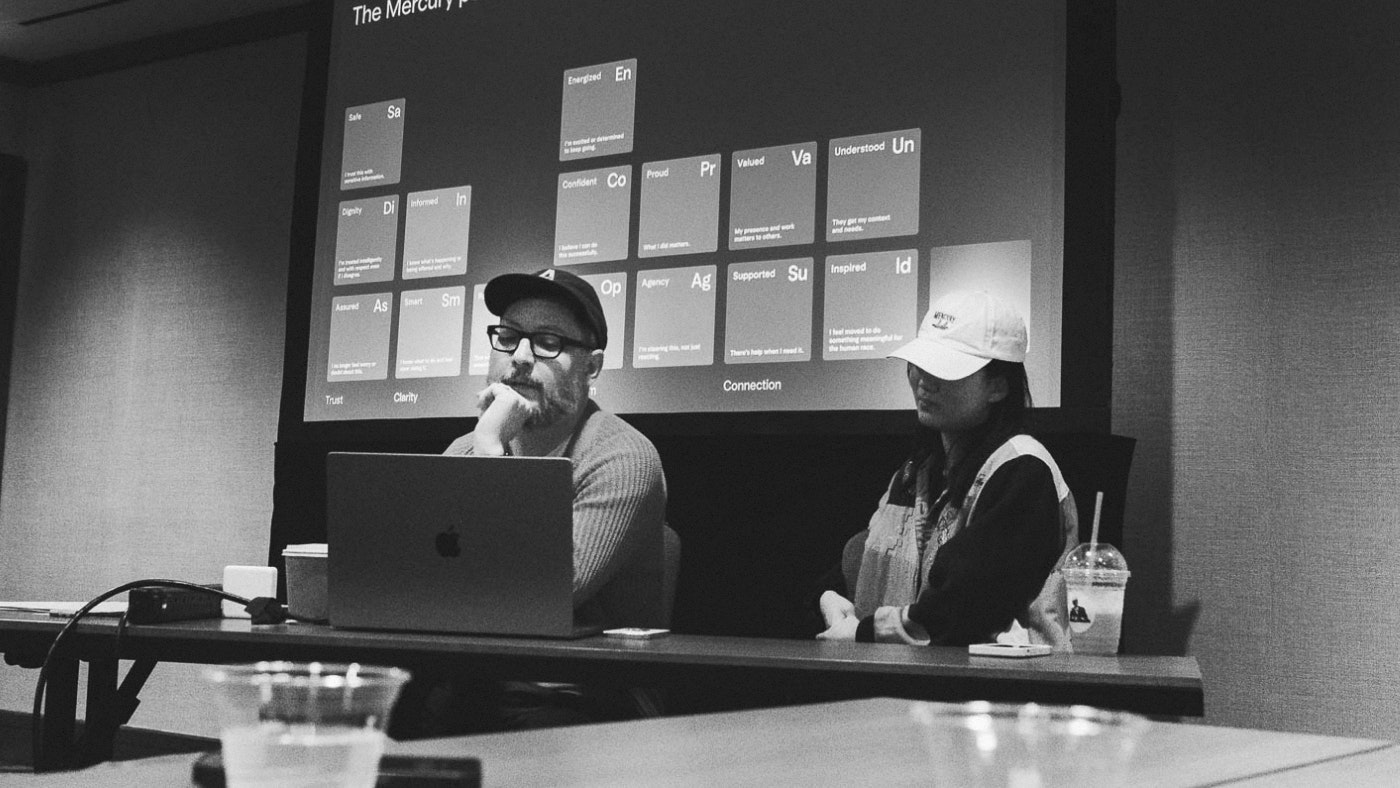By: Mercury
May 18, 2020
Listen on Apple Podcasts, Spotify, or your favorite podcast app.
This is Series Tea, a podcast where we find the greatest entrepreneurs and investors and force them to have tea with us — live on air.
This week we’re having tea with Brianne Kimmel, founder and managing partner of Work Life Ventures. She’s an investor in Webflow, Voiceflow, Tandem, and 20+ startups focused on the future of work. Business Insider recently named Brianne a top angel investor every startup should know.
This interview has been lightly edited for length and clarity.
We’ve made about 20 investments all around the future of work, primarily workplace software. Everything from developer tools, design tools, especially things that have more of a bottom-up go-to-market.
The founders of a lot of our portfolio companies are based here in Silicon Valley. Then you end up discovering that they have highly efficient engineering orgs in other places, leaning into the benefits of having different people in different time zones. It creates a highly efficient, and not to mention capital efficient, model because you can access global talent.
The companies that are going to feel this the most are the large enterprises that immediately had to offer remote work. It’s going to be hard for these large companies to give something and then take it away. It’s going to fundamentally change the way that people think about workplace culture, team structure. And a lot of these things probably aren’t sustainable.
I have been looking at a lot of tools for remote teams. I’ve been looking extensively at homeschooling because there’s this massive resurgence where you can access world-class teachers at a really affordable cost structure.
The one thing that we haven’t quite figured out is how we all share the same space. Especially in an affordable way, because we’re still in a moment where a lot of individuals are living in very dense urban areas.
When pitching investors for the Work Life fund, they’d say, “Are you consumer or are you enterprise?” After investing in great consumer founders who happen to be building new applications for work I said, “No, no. It’s actually neither. The lines will be incredibly blurred.”
One of the hypotheses that I had was that we’ll see a new way that people think about their neighborhoods. I do see people who work from home care a lot more about the location in which they live. They care about supporting their local restaurants. They get to know the front desk person at their local gym. I think the neighborhood will be cool again.
Tandem has been an interesting one. They are seeing close to 10x week-over-week user growth. As people want that in-office feel, synchronous communication has become a real value-add in an ecosystem that’s historically been asynchronous-first.
I’m also an investor in GitDuck. GitDuck does real-time collaboration in on-demand videos attached to the code base. It’s keeping developers connected to the code at all times with the ability to add very short status updates and very short notes. It’s much easier for individuals to collaborate synchronously and then also leave updates asynchronously.
I’m also seeing people thinking about ways to restructure their day and remove the total number of meetings. There’s more focus on leveraging information in the body of calendar invites, stitching together status updates and team updates, and other things that will actually reduce the total number of meetings.
From a spatial standpoint, Tandem has by far the most thoughtful social features. Having those water cooler moments are important, especially if you identify as an extrovert and want to be around people.
There are a couple of Slack integrations. There’s one called Donut. It connects through DM, “Hey, this is someone that works in your company you haven’t met before. You guys should catch up.”
I do anticipate that this will have a direct impact on employee retention. We’ll end up going through a period of reimagining what a distributed benefit stock will look like. Is it providing a coffee budget for remote employees where they can go to their favorite coffee shop? Are there ways to actually do team lunches in a distributed way?
All-team off-sites will be increasingly important. I think the ability for individuals to have some travel and education spend so they can come to the office and visit whenever.
I’ve also heard of some great scenarios where you can work remotely to get to know another co-worker, especially if they’re based in a cool place like Mexico City.. If my company would pay for me to go stay there for a couple of days and then I turn that into a long weekend, that’s a really nice way to build a relationship and you still have a real attachment to the company.
Once the novelty of having a happy hour over Zoom wears off, employers will have to rethink to what extent they can offer benefits and education. Maybe it’s access to products like MasterClass or Coursera or Udemy.
Valuations are coming down. Firms are being more selective with the companies that they’re meeting.
We lost our way in lean best practices. There was enough capital in the market where founders and firms were very optimistic and opportunistic. A lot of companies were coming in with 18 to 24 months with no revenue. Now there’s been a forcing function to which investors and founders will be a lot more thoughtful around the capital efficiency and timeline to revenue.
The luxury of enterprise, and the luxury of thinking about reimagining work, is that we have the ability to do it alongside great teams. Productivity tools, or solutions that have historically been lower on the hierarchy of needs, will start to shift their strategy a little bit.
A lot of investors are doing working sessions around how to stabilize existing investments. Firms are not taking in as many meetings. They’re waiting for evaluations to come down.
But that also presents an opportunity for new funds that don’t have board seats and don’t have to deal with a portfolio from the past 10 years. All of the Work Life portfolio companies have greater than 18 months of runway. I’m spending a lot of my time re-engaging with companies that are thinking about seed extensions, that potentially need to capitalize a little bit more to get to Series A milestones.
Cut costs is step one. Step two is determining to what extent can you layer in additional revenue streams.
It will be a positive forcing function for partnering with customers. It may require building specific features to retain large accounts. We’re in a period where not only is revenue important, but churn is going to be our worst enemy. Companies will be forced to spend a lot of time with the customers that drive revenue, and they may have to fast follow with features that shift some of their product development.
My last five investments have all been infrastructure. One in payments infrastructure, a lot is happening in FP&A and finance.
There’s a lot happening in adding real-time collaboration to any sort of document or process. One thing that’s super interesting about real-time collaboration is historically, it’s been viewed as a way to keep everyone in the loop. Having real-time commenting and real-time collaboration features is actually about accountability. Ensuring that your coworker that’s working from home is actually working from home.
In the future a lot of technology will have real-time collaboration. Even non-workplace productivity tools will start to have some of these features as well.
The native apps have done a pretty good job at this. Uber is highly efficient in the way they dispatch drivers. There’s also forward dispatching and all of these features to make it as easy as possible for drivers to find their next ride.
There’s a whole class of labor that historically have met their clients in person. Beauticians and barbers and bartenders. We’re starting to see yoga instructors teaching classes on Zoom. People are adapting and finding ways to make money, but we will need more infrastructure and more tooling to make sure that’s successful and fairly turnkey.
The optimistic view is that this will accelerate the long tail of people who create content and make money. Not that these will all be real levers for upward mobility, but maybe a little bit of extra supplemental cash.
Bowling Alone was a good one. I’ve been spending some time on video games, video game design, to what extent will gaming change the way that we think about social relationships.
The past 10 years, we’ve lost that connective tissue to our neighborhoods. I do wonder if we’ll start to see a switch where you can have community from home. People are meeting in Fortnite and catching up with old friends. There’s a lot of goodness that comes from playing games with other people or connecting online.




Mercury is a fintech company, not an FDIC-insured bank. Banking services provided through Choice Financial Group and Column N.A., Members FDIC. Deposit insurance covers the failure of an insured bank.